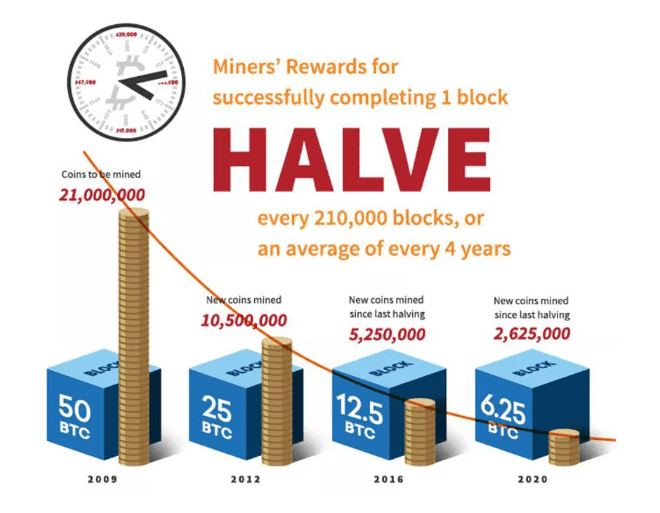There were 19,558,043 bitcoins in existence as of Dec. 1, 2023. Since the cryptocurrency has a limit of 21 million, there were 1,441,957 bitcoins left to be rewarded. In fact, one of the chief characteristics of Bitcoin (BTC) is its limited coin supply. Bitcoin inventor Satoshi Nakamoto, the anonymous name used by the creator(s) of the Bitcoin cryptocurrency, designed the cryptocurrency with a cap to limit the supply. This increases its scarcity over time, which tends to increase demand and price. New bitcoins are added to the Bitcoin supply approximately every 10 minutes, which is the average amount of time that it takes to create a new block on the Bitcoin blockchain. By design, the number of bitcoins minted per block is reduced by 50% after every 210,000 blocks, or about once every four years. Will the Number of Bitcoins Ever Reach 21 Million? The total number of bitcoins issued is not expected to reach 21 million. That’s because the Bitcoin network uses bit-shift operators—arithmetic operators that round some decimal points down to the closest smallest integer. This rounding down may occur when the block reward for producing a new Bitcoin block is divided in half, and the new reward amount is calculated. That reward can be expressed in satoshis, with one satoshi equaling 0.00000001 bitcoins. Because a satoshi is the smallest unit of measurement in the Bitcoin network, it cannot be split in half. When tasked with splitting a satoshi in half to calculate a new reward amount, the Bitcoin blockchain is programmed—using bit-shift operators—to round down to the nearest whole integer. This systematic rounding down of Bitcoin block rewards in fractions of satoshis is why the total number of bitcoins issued is likely to fall slightly short of 21 million. With the number of new bitcoins issued per block decreasing by half approximately every four years, the final bitcoin (realistically the final satoshi) is not expected to be generated until 2140 (it might be earlier). The number of new bitcoins minted per block was 50 when Bitcoin was first established and has since decreased to 6.25 as of May 2020—the next halving to 3.125 is expected sometime in 2024. Although a maximum of 21 million bitcoins can be minted, it’s likely that the number of bitcoins circulating remains substantially below that number. Bitcoin holders can lose access to their bitcoins, such as by losing the private keys to their Bitcoin wallets or passing away without sharing their wallet details. A June 2020 study by the crypto forensics firm Chainalysis estimated that up to 20% of the Bitcoin already issued may be permanently lost. What Happens After All 21 Million Bitcoin Are Mined? After the maximum number of bitcoins is reached, even if that number is ultimately slightly below 21 million, no new bitcoins will be issued. Bitcoin reaching its upper supply limit is likely to affect Bitcoin miners, but how they are affected depends in part on how Bitcoin evolves as a cryptocurrency. Bitcoin transactions will continue to be pooled into blocks and processed, and Bitcoin miners will continue to be rewarded, but likely only with transaction processing fees. If Bitcoin in 2140 essentially serves as a store of value rather than for daily purchases, then it’s still possible for miners to profit—even with low transaction volumes and the disappearance of block rewards. Miners could charge high transaction fees to process high-value or large batches of transactions, with more efficient “layer 2” blockchains like the Lightning Network working with the Bitcoin blockchain to facilitate daily bitcoin spending. The Bottom Line Will Bitcoin function like pocket change or bars of gold in 2140? The Bitcoin ecosystem is still developing, making it possible that Bitcoin itself will continue to evolve over the coming decades. However Bitcoin evolves, no new bitcoins will be released after the limit of 21 million coins is reached. This supply limit is likely to have the most significant impact on Bitcoin miners, but it’s possible that Bitcoin investors could also experience adverse effects. The comments, opinions, and analyses expressed on Investopedia are for informational purposes only. Read our warranty and liability disclaimer for more info. As of the date this article was written, the author does not own cryptocurrency.



